If you are looking for a beautiful, low-maintenance houseplant that can spruce up any room in your home, then the Philodendron Camposportoanum is an excellent option. This stunning tropical plant is native to South America and has attractive glossy green leaves with striking veining. With a few simple care hacks, this hardy plant can thrive in your home for many years to come.
In this blog post, we’ll be discussing the essential care hacks for your Philodendron Camposportoanum, so that you can keep it looking healthy and vibrant. From temperature and light requirements to watering schedules, we’ll cover all the must-know Philodendron Camposportoanum care hacks. So, let’s get started.
What is Philodendron Camposportoanum?
Philodendron Camposportoanum is a species of philodendron that is native to the Caribbean. It is a climbing plant that can grow to be up to 3 feet tall. The leaves are ovate and have a serrated edge. The flowers are white and have a yellow center. It is a great plant for those who want to grow a large plant. It is a slow growing plant, but it does have a long life span.
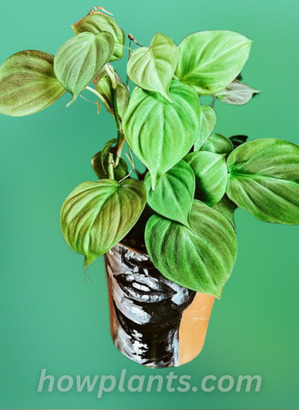
Origin and Characteristics
Philodendron Camposportoanum exact origin is unknown, but it is believed to have originated in the Amazon Rainforest. The plant is typically found growing in areas with high humidity and a lot of light. It has large leaves that are ovate in shape and can grow up to eighteen inches in width. The leaves are also covered in small bumps that give the plant its characteristic texture. The flowers of Philodendron Camposportoanum are small and white and are typically found in clusters at the top of the plant.
Some Common Names
The common names for Philodendron Camposportoanum are
- Philodendron Cordatum
- Philodendron Compactum
- Philodendron Ferrugineum
- Philodendron Hirsutum
Appearance, Size and Growth rate
Appearance: It has a compact, columnar form with a bright green, variegated leaf. The flowers are white and fragrant, and the plant is very easy to grow.
Size: The mature size of a Philodendron Camposportoanum plant can reach up to 12 feet in height and width.
The growth rate of Philodendron Camposportoanum varies depending on the lighting conditions, temperature, and humidity. It is typically slow-growing, but can grow rapidly under favorable conditions.
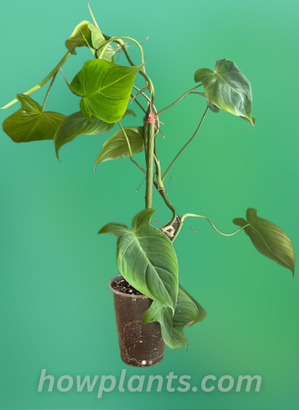
Necessary care that Philodendron Requires
The Philodendron Camposportoanum plant needs a good amount of light, water, and fertilization. It is also important to keep the plant away from direct sunlight, as this can cause it to burn. The plant should be watered regularly and fertilized every two months.
What is philodendron Sap?
Philodendron sap is a type of secretion that is produced by some plants in order to protect themselves from predators. These secretions can be sticky or slimy, and are often used by plants to trap insects or other animals.
Requirements for best growth
To achieve the best growth of Philodendron Camposportoanum, the following requirements must be met:
- A well-drained soil mix
- A sunny location
- A moderate to high humidity level
- A consistent watering schedule
- Fertilization with a balanced plant fertilizer every two weeks
Light Needs
These plant love to be in bright indirect light. They need 6-8 hours of bright light. The leaves are used to create a light shade that is perfect for growing in bright, indirect light. Keeping these plants under direct sunlight for a few hours in the morning is good idea , otherwise its leaves become leggy.
Water Requirement
The water requirements of Philodendron Compos are not well documented, but it is likely that they require similar amounts of water as other plants in the same genus. It requires a moist environment to show ideal growth. It should be watered regularly, especially during periods of high humidity.
A pot of Philodendron Camposportoanum requires at least 2 gallons of water per week. More is better, but not necessary. When watering, make sure to water deeply and allow the pot to drain for several hours before watering again. Keep the soil moist, but not soggy. It is also important to water it when the soil is dry, as over-watering can cause root rot.
Humidity Requirements
The humidity requirements of Philodendron Camposportoanum vary depending on the climate in which the plant is grown. In climates with high humidity levels, the plant may require up to 85% humidity. In drier climates, the plant may only require 50% to 60% humidity.
Best Pots
The best way to grow this plant is by using a pot. Make sure the pot is large enough so that the plant has plenty of room to grow. You should also make sure the pot has good drainage so that the plant can get rid of any excess water.
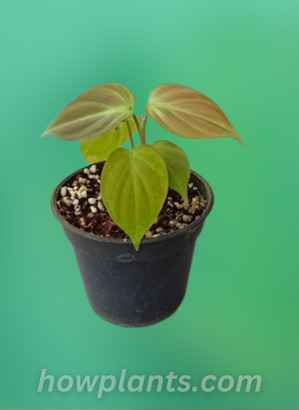
Repotting
Particular philodendron is known to require repotting every two to three years. The repotting process involves moving the philodendron from its current pot to a new, larger pot. Make sure that the new pot is at least twice the size of the old pot. Philodendron Camposportoanum is a slow-growing plant, so be patient while it grows in its new pot.
Soil mix Recipe
Soil mix recipe ideal for the growth of Philodendron Camposportoanum:
1 part loam
1 part peat moss
1 part sand
Mix the ingredients together until you have a uniform mixture. This soil mix will be perfect for the growth of Philodendron Camposportoanum.
pH and Fertilizers
pH: The ideal pH for the growth of Philodendron Camposportoanum is 6.5 to 7.5. This is because this plant prefers a slightly acidic environment.
Fertilizers: There are a few different types of fertilizers that can be used for philodendrons. One type of fertilizer that is often used for philodendrons is compost. Compost is a good fertilizer for philodendrons because it is high in nitrogen. Nitrogen is a key nutrient for philodendrons because it is needed for the plants to grow.
One final type of fertilizer that can be used for philodendrons is an organic fertilizer. Organic fertilizers are often used for plants that are not in water.provide your plants with these fertilizers from the start of spring to the end of summer. There is no need to provide your plant with fertilizers during the winter season.
Toxicity and Propagation
Toxicity: Philodendron Camposportoanum are toxic to humanbeings and many animals like cats and dogs etc. Some pet animals may be sensitive to the toxins like calcium oxalate crystals, found in Philodendron Camposportoanum, and may experience adverse effects such as vomiting, diarrhea, and difficulty breathing. If you are unsure whether or not your pet animal will be harmed by using Philodendron Camposportoanum, it is best to consult with a veterinarian before using the plant in their care. Its sap if it comes in contact with skin it acts as an irritant.
Propagation: Heart leaves of Philodendron Camposportoanum are a popular choice for propagation because they are easy to grow, have a long life span, and are hardy in a variety of climates. The leaves can be grown in a pot or in the ground, and they can be propagated by stem cuttings or by rooting offsets.
Stem propagation in Soil
The procedure of propagating Philodendron Camposportoanum in soil by stem cutting is as follows:
- Remove the old stem from the plant.
- Cut the stem at a 45-degree angle just above the ground.
- Remove the cuttings from the stem and place them in a pot of soil.
- Water the cuttings well.
- Plant the cuttings in a sunny spot.
Air layering Technique
Air layering is a propagation technique used in Philodendron Camposportoanum. It is used to increase the roots of the plant. The technique is simple and can be done easily by anyone. The procedure is as follows:
- Cut the stem having at least 2 nodes from the plant with the help of sterilized scissors in order to avoid the probability of infection.
- Take the sphagnum moss in the plastic bag, add water into it to make it damp. Place the stem having 2 nodes into it. Make cuts on the bag so that air flows through it.
- Make holes in the bag in order to water the plant. Best way is to leave a large hole on the top of the bag for watering the plant.
- Keep the soil slightly damp and if you feel, soil has become soggy make more cuts on the bag to allow more air to flow through it.
- Within a month new roots will develop. Remove the stem carefully and plant it in soil.
Philodendron propagation through Seedlings
Philodendron seedlings are small plants that are typically grown as houseplants. They are often sold in starter kits, and require little care other than watering and fertilizing. Philodendron Camposportoanum will take around 10-12 weeks to grow from seeds.
Pruning a Philodendron
Philodendrons are a type of succulent that can grow quite large. You will need to prune them regularly to keep them in shape. Start by cutting off any dead or diseased branches. Then, cut off any branches that are growing in the wrong direction or are too close to the ground. Finally, cut off any branches that are growing too high.
Diseases and Pests
There are many diseases and pests that attack Philodendron Camposportoanum, but the most common and damaging are rot, spider bugs. Rot is caused by a number of different organisms, but the most common is a fungus. Rot causes the leaves to turn yellow and fall off the plant, and can eventually kill the plant. Rot can be prevented by keeping the plant clean and free of debris, and by watering the plant thoroughly.
Treatments of Diseases
There are many treatments for diseases and pests that affect Philodendron Camposportoanum. Some common treatments include:
Root rot
It is caused when Philodendrons are over-watered. Instead of treating root rot its prevention is comparatively easy. If the plant is facing this problem immediately remove it from the soil and remove all the damaged roots and transfer it to the new soil.
Spider mites
They cause the appearance of brown spots on the leaves. It also affects the growth of the leaves. To treat spider mites, spray your plant with horticultural oil.
Brown tips
Another problem associated with Philodendron Camposportoanum is brown leaves tips which is an indication that the plant is facing too much bright light. In order to treat it, change the location of your plant.
Comperison of Philodendron with other Plants
It is a hybrid plant that is a cross between a philodendron and a cactus, and it has beautiful, long, spiky leaves.
Philodendron Camposportoanum VS Micans Philodendron
Philodendron camposportoanum is a rare species that is native to Brazil. It has heart-shaped leaves that are velvety and dark green in color. The leaves can grow up to 5 inches long, making it perfect for small spaces or as a tabletop plant. This plant prefers bright but indirect light and should be watered only when the soil is dry to prevent root rot.
On the other hand, Micans Philodendron is known for its beautiful coppery-colored leaves that have a velvety texture similar to its counterpart, Camposportoanum.
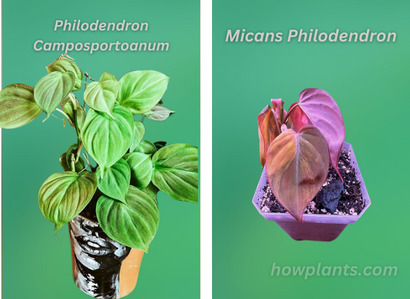
Philodendron Camposportoanum VS Juvenile Philodendron
Philodendron Camposportoanum is a more robust plant that can handle more extreme conditions than juvenile Philodendron. It can tolerate drier conditions and is less prone to disease.
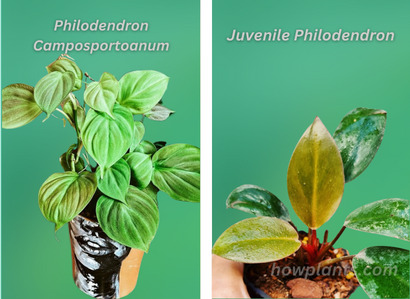
Philodendron camposportoanum VS Fibraecataphyllum
The Philodendron Camposportoanum is a larger and more robust philodendron than the fibraecataphyllum. The Camposportoanum has a more upright growth habit, is more colorful, and has more fragrant flowers. It is also more tolerant of less-than-ideal growing conditions, such as low light levels.
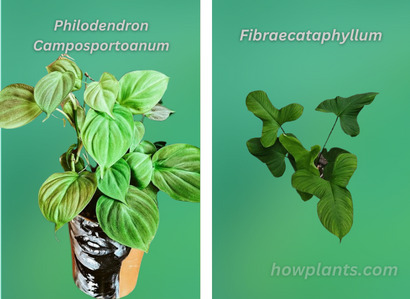
Summary
In conclusion,taking care of a Philodendron Camposportoanum is an easy task that can be done by any beginner gardener. With the help of this guide, you now have the necessary tools and information to keep your plant healthy. Make sure to water it regularly, avoid over-fertilizing, and give it plenty of bright but indirect light. Regular pruning and repotting can also help maintain your Philodendron Camposportoanum’s health and beauty.
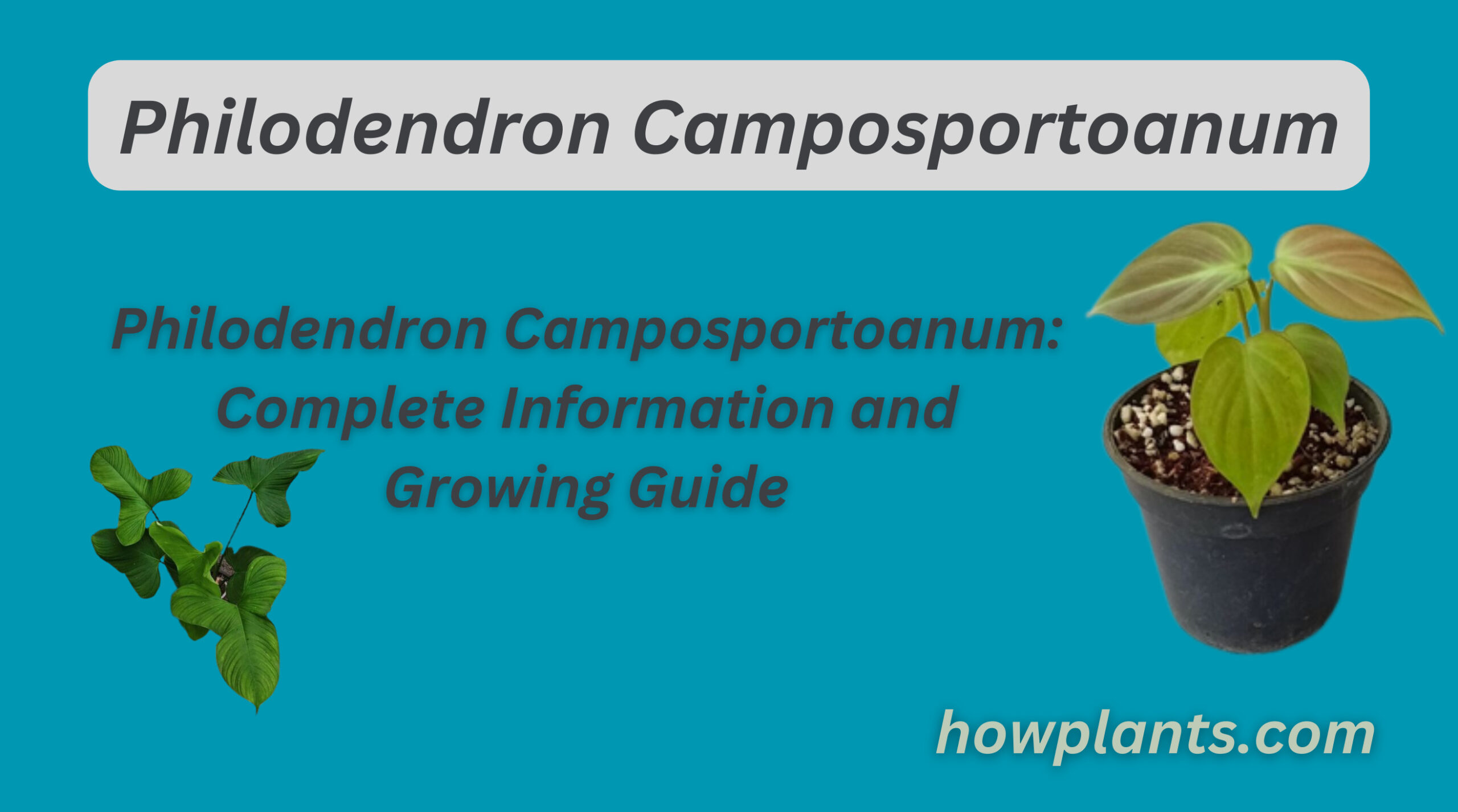
1 thought on “Philodendron Camposportoanum: Complete Information and Growing Guide”